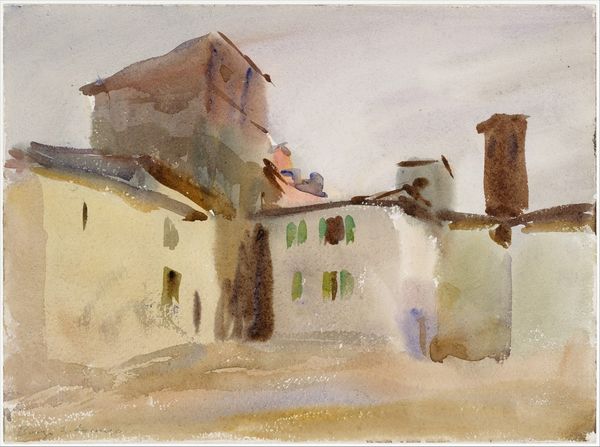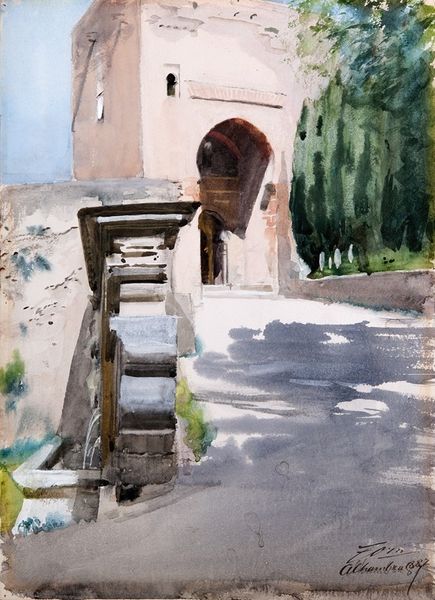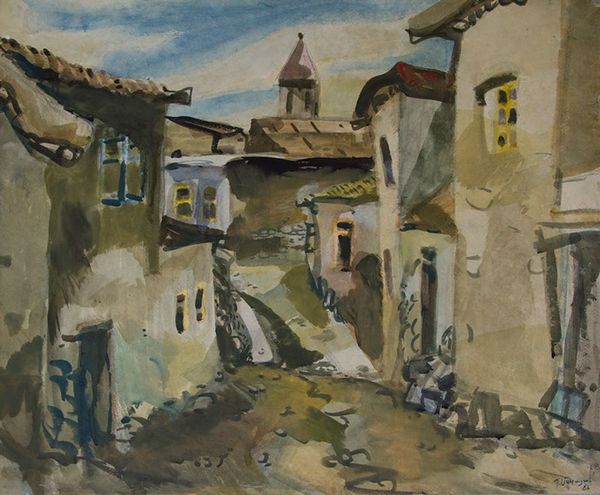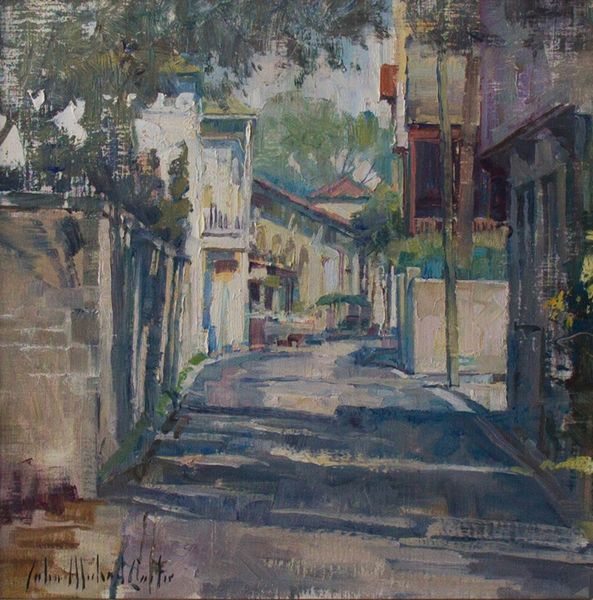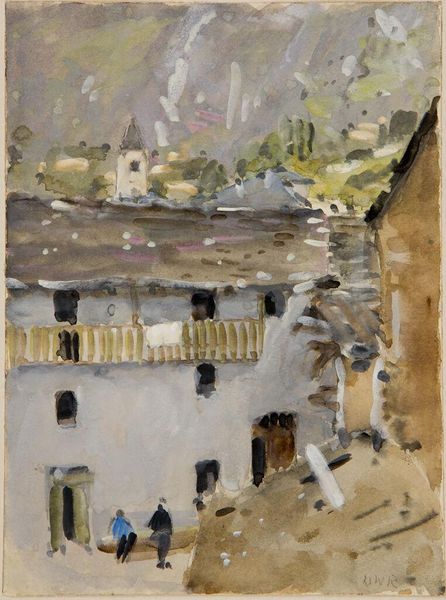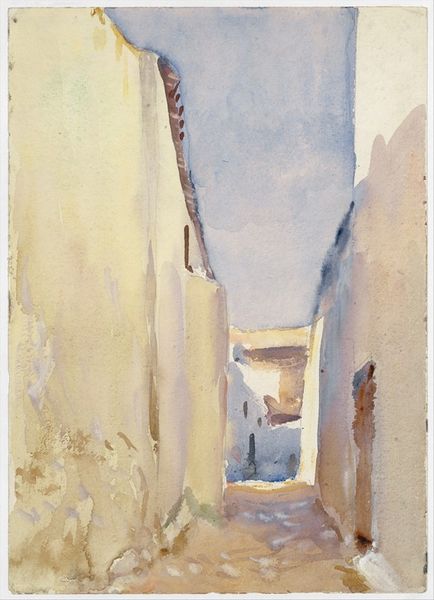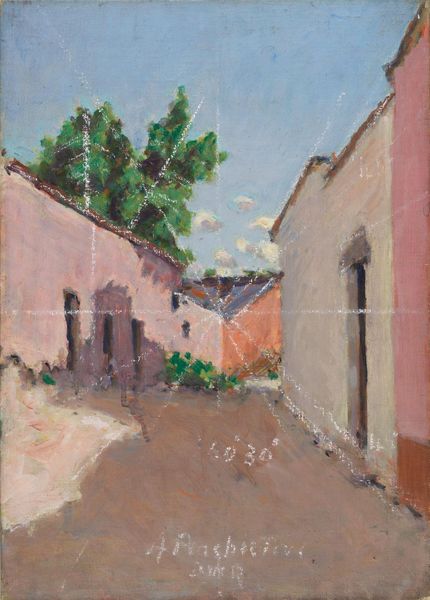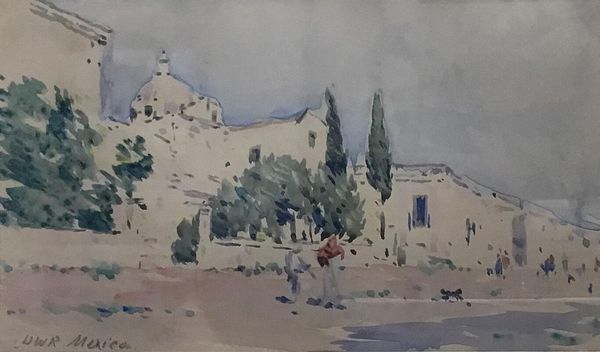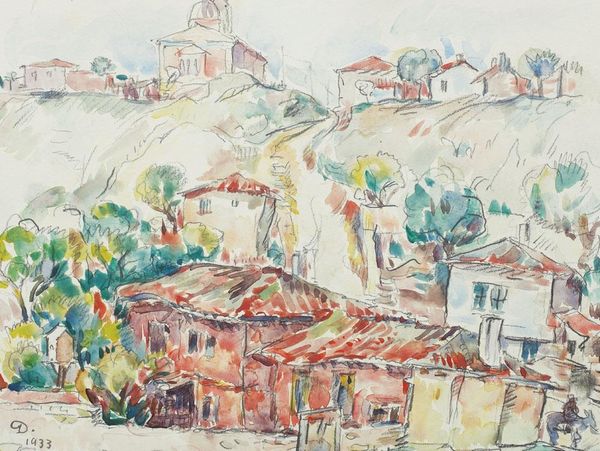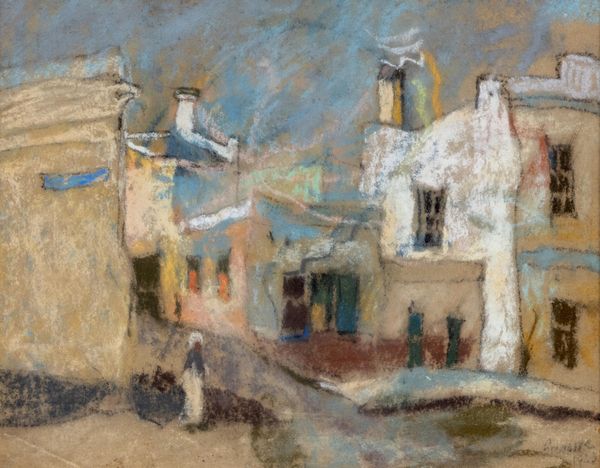
painting, plein-air, watercolor
#
painting
#
impressionism
#
plein-air
#
landscape
#
oil painting
#
watercolor
#
cityscape
#
post-impressionism
#
watercolor
#
building
Dimensions: 44.45 x 36.83 cm
Copyright: Public domain
Editor: Here we have John Singer Sargent's "The White House", painted using watercolor in the Impressionistic style. I’m really drawn to the way he captures light in this piece, the shadows creating such strong contrasts. How do you interpret this work, especially considering Sargent's background and the time it was created? Curator: Well, this vibrant watercolor offers an intriguing lens through which to examine the narratives of privilege and power inherent in Impressionism and Post-Impressionism. Consider the title, "The White House." Is this the actual White House, the symbol of American power? Or a dwelling referencing whiteness, perhaps speaking to the social constructs of race and identity? Editor: That's a fascinating point! I hadn’t considered the double meaning of the title. Curator: Right. Sargent, an expatriate, often depicted scenes of leisure and affluence. By focusing on this architecture bathed in light, what might he be saying about the power structures that create and maintain such spaces? Where are the people, who maintain such spaces and likely are people of colour? How does his style—loose brushstrokes, emphasis on light—either reinforce or subtly critique those structures? Editor: So, the very act of painting this scene, using this style, could be a statement about the prevailing social order? Curator: Precisely. By exploring the historical context, we can unpack how art participates in broader conversations about identity, social justice, and the representation of power. What stories aren’t being told in this image? Editor: I see what you mean. Looking at it that way makes me think about who is absent from the picture and why. It definitely adds a layer of complexity that I hadn’t appreciated before. Curator: Absolutely! Engaging with art through this lens encourages us to question dominant narratives and consider whose perspectives are often marginalized.
Comments
No comments
Be the first to comment and join the conversation on the ultimate creative platform.


